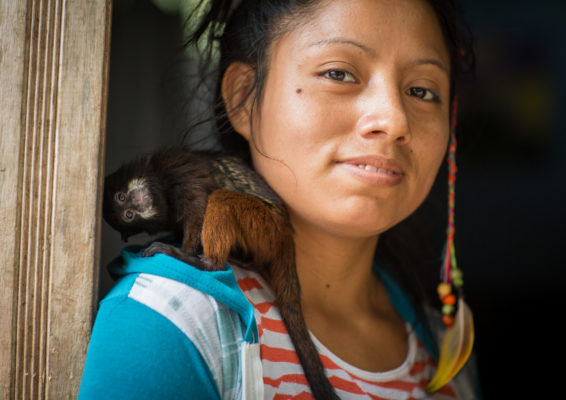FOUR REASONS
Part of the reason women aren’t being explicitly included in these processes is because of resistance by the communities themselves – particularly from men.
In another brief (in Spanish) Larson and Monterroso spell out four reasons why:
Firstly, “We’ve always done it this way”: Male leaders say it’s against tradition to change tact, and NGOs and officials are reluctant to intervene.
Secondly, “Women aren’t good at that”: Gender stereotypes exist both in communities and among administrators, and reinforce the idea that women belong in the home. Women too are less likely to express their opinions about the forest or territory in public.
Next, Impossible requirements: Some communities require that members involved in formalization decision-making have a secondary education or know how to read and write – excluding a large number of women.
And finally, “It’s too expensive/it will be a headache”: involving women is seen as over-complicating the process.
These barriers are significant, Larson says, and difficult to overcome.
“Indigenous movements have spearheaded the titling of native communities – and those movements themselves are very male dominated. So it’s hard for them to fully take on gender– it’s a battle. If you come in to a community with a ‘gender agenda’ you’re likely to be ignored or told to leave. There’s a lot of backlash.”
For the government, therefore, there’s a tendency to treat gender as an internal community problem they don’t need to get involved in, “but that’s just shirking responsibility, trying to avoid the issue reinforces inequality,” Larson says.
“Women should be an essential part of the team,” adds Monterroso, who cites that better cross-working with institutions and a set aside budget for gender integration, would be a big step forward.
It’s not just outsiders and feminists pushing for change, Larson says, but indigenous women themselves. The NGO Organización Nacional de Mujeres Indígenas Andinas y Amazónicas del Perú (Onamiap) is fighting for women’s inclusion in decision-making about collective land, as are women inside the more traditionally male-dominated indigenous federations.
TRICKS AND TRAINING
As it stands, women are constrained by multiple layers regulating their rights and participation, Larson says.
“Women are not only subject to whatever the law says, they’re subject to what their communities say, and then they’re also subject to the rules of their household. They are triply burdened by the context around them in terms of what rights they have to land.”
So what’s the answer? The NGOs and government agencies dealing with the formalisation process must be trained in gender, Larson believes.
There are ways of promoting women’s inclusion without coming across like an imperialistic coloniser, she says.
“There are tricks that make it possible for women to participate – holding meetings at times of day when women aren’t tied up with their domestic duties, or making decisions on a certain topic not on the day it was discussed, but the day after – so that men have time to go home and discuss it with their wives.”
“As a scientist, these are all tactics you could use. But what you do in any particular location has to be based on what you find – you may find an incredible group of women leaders or you may find women that barely leave their homes.”
“My proposal is to get people trained in gender, and multicultural approaches (or interculturalidad as defined by Peruvian law), onto the formalisation teams. Then they can help to bridge the interaction at the community level.”

